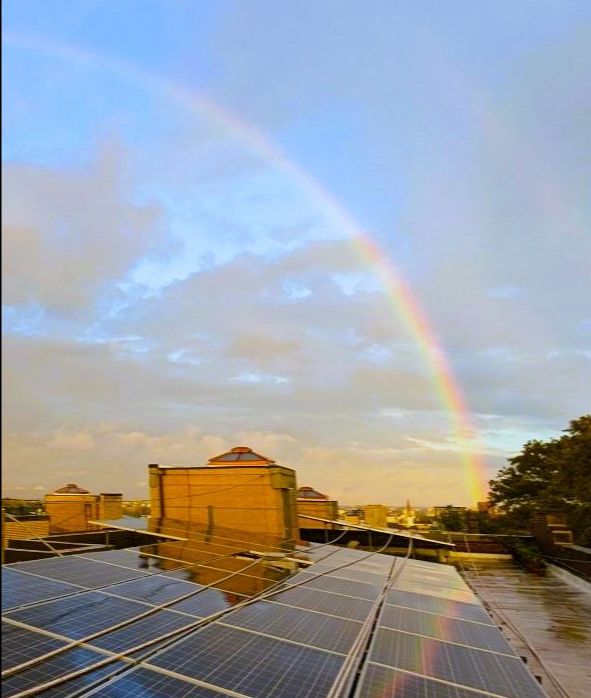
We’ve seen the last of 2023, and with it some hair-raising U.S. climate milestones: $25 billion worth of natural disasters (a record), heartbreaking wildfires in Maui, a month’s worth of triple-digit temperatures in Phoenix, epic floods in Vermont…and despite it all, the greenlighting of the Willow oil project in Alaska.
Nevertheless, through our collective tears we can also see significant progress being made to address the climate crisis. While anything may happen in 2024, here are some of the hopeful developments from the past twelve months that are moving the country in the right direction.
To encourage clean energy projects, the Bureau of Land Management approved 50 clean energy projects on federal lands in the last two years, including a 732-mile transmission line across the West. It also proposed lowering the fees for wind and solar development by 80 percent.
The dirtiest power plants were put on blast: Coal-fired electricity capacity in the U.S. is down 42 percent from its peak in 2011, and 40 percent of what remains is expected to retire by 2030. Also, hundreds of thousands of abandoned oil wells dot the country, polluting the air and water. A federal cleanup program is directing more money than ever before toward capping these wells while creating jobs.
Evidence supported the wisdom of using natural solutions to promote carbon sequestration. Wetlands, for example, can serve as vast carbon sinks. Louisiana has begun a $3 billion project to restore them, hoping to bring back 21 square miles of land to the coast. Trees are also powerful carbon keepers, and restoring them can cool urban heat islands. As part of a tree-equity “collaborative,” Seattle pledged to plant 8,000 trees and 40,000 seedlings in an effort to cover one-third of the city in tree canopy by 2037.
Transportation accounts for nearly one-third of U.S. greenhouse gas emissions, and most of that pollution comes from cars and trucks. People in the U.S. bought more than 1 million EVs this year, and the country could have 30 million of them by 2030. While they aren’t a perfect solution, they’re certainly better than doing nothing. Meanwhile, electric buses or new passenger rail lines like the one that opened in Honolulu will help increase reliance on public transportation, as will micromobility programs like a nonprofit community-led bikeshare in New Orleans.
These are just some of the ways progress has been made toward a sustainable future in 2023. To learn more, check out the full list on the Grist.org website here.

